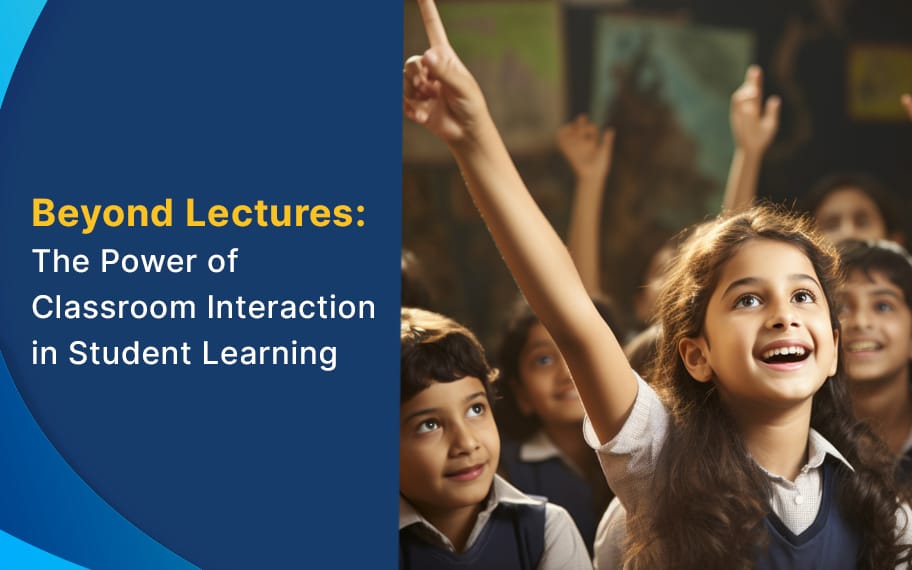Have you been planning on working in an environment which includes kids? Then you will realise how important it is to know how to deal with children in a healthy manner. The goal is to not just impart knowledge but to do it in a way which is appealing and morale-building. Being a teacher requires specific training on how to behave in a classroom, which includes utilising tools such as classroom interaction. Keep reading to know about the do's and don'ts of interacting in the classroom and much more.
What is Classroom Interaction?
Gone are the days when teacher-student interactions were limited to purely academic intent and purposes. Nowadays classrooms provide an environment for students to express themselves through discussion. Such an exercise brings several benefits such as advanced critical thinking, greater tolerance towards opposing ideologies, and much more. The long-term process of attaining such goals through open lines of communication and collaboration is recognised as what is classroom interaction.
What are the types of Classroom Interaction?
Interacting in the classroom refers to the exercise of conversation between the teacher and their students or even between two or more students. The meaning of what is classroom interactionclassroom, strays from a generalised definition since communication between two teachers is not considered. There are three types of classroom interactions which can be observed across all ages.
Teacher-Student interaction
The leading role is played by the teacher, who sets the volume, language and informality of the conversation. The student follows in answering questions and can be either praised or asked to try again based on their response.
Student-Teacher interaction
The main role of the instigator of the conversation is the student. The major learning outcomes are improved vocabulary and confidence to speak up. Students are also asked to elaborate their points with examples, which explore imaginative prowess and logical reasoning.
Student-Student interaction
Interaction between two or more students is far more complex to observe than the other two. Teachers are also indirectly responsible for developing interaction inside the classroom, which generates interesting conversation.
How to Implement Classroom Interaction?
Interaction inside the classroom should generate long-term changes rather than focusing on short-term responses. There are three major features defining what is classroom interaction.
Intellectual environment
Stimulating students mentally requires developing an intellectual environment through role-playing activities. Virtual classes and online tools also go hand in hand.
Autonomy of selection
A quality interactive classroom offers a learning style which is compatible with each student. In other words, there is no singular method of going about a project or learning outcome. Students should be able to select the learning methodology best suited.
Channel for rectification
Keep in mind that students are here to learn and master, which is why they will make several mistakes along the way. Instead of reprimanding young students, teachers and students should work together to communicate their expectations.

What are the benefits of Interacting in the Classroom?
There are several benefits of classroom interaction which can be observed by not only students but also teachers. Some of these are:
Increased engagement
First on the list has to be how interactive classrooms improve student engagement which plays a direct role in creating a positive learning environment.
Better collaborative efforts
Being in a place of healthy communication allows students to work together more efficiently. In the long term, teamwork and sportsmanship are practised.
Reach higher goals
Having a support network and regularly communicating with peers help students achieve higher goals than those observed in traditional classrooms.
Greater exposure
Since students are exposed to a greater variety of lifestyles and ideologies they grow up to be more familiar with the outside world.
Since the purpose of a teacher is to impart education in the most effective and well-rounded manner possible, the benefits of interactive classes also satisfy the objectives of teachers.
Why is Classroom Interaction difficult?
As the saying goes every coin has two sides and the goals expected from what is classroom interaction and its application are often left incomplete due to obstacles along the way. Let's take a look at some of the challenges teachers face during applying interactive lessons. Due to the short class duration, teachers may find it difficult to attend to each student and their concerns. The same dilemma applies to a lack of ample time for preparation, as well as high resource costs for different online tools.
So, what are you waiting for? Ready to apply the benefits of classroom interaction and impress your students? Keep reading our blogs to know what’s new in the education community.
With Teachmint Interactive Flat Panels, Enhance the teaching and learning experience.






